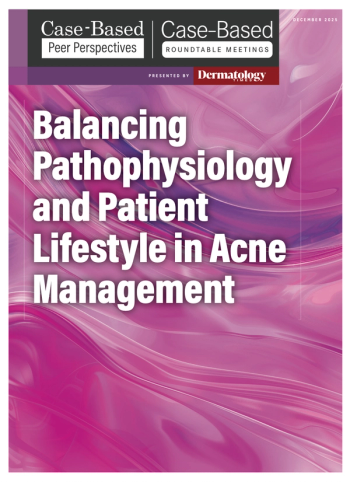
Ritlecitinib Shows Promising Results in Long-Term Trial
Researchers found patients with less than 95% hair loss at baseline reached median SALT score 2.4 or less, reflecting almost complete hair regrowth.
A poster presented at the 2024 Revolutionizing Alopecia Areata, Vitiligo, and Eczema (
Background
The oral JAK/TEC family kinase inhibitor showed promising results in patients 12 years and older with AA with over 50% hair loss in the
Methods
The open-label, multicenter, long-term study (
The researchers behind this analysis reported that all patients received an initial 200 mg 4-week loading dose and 50 mg daily dose of ritlecitinib. Outcomes were measured as median SALT score over time and the proportion of patients with SALT score of 20 or less (20% or less scalp hair loss) and 10 or less (10% or less scalp hair loss) at month 15. At baseline, patients were separated into 5 categories based on extent of scalp hair loss (measured by SALT score): 25 to less than 50, 50 to less than 75, 75 to less than 90, 90 to less than 95, and 95 to 100.
Results
In total, 1052 patients were enrolled in ALLEGRO-LT, 447 of whom were included in the de novo cohort. Of the 447 patients:
- 26.6% (n = 199) had baseline SALT scores 25 to less than 50
- 16.8% (n = 75) had baseline SALT scores 50 to less than 75
- 9.2% (n = 41) had baseline SALT scores 75 to less than 90
- 2.9% (n = 13) had baseline SALT scores 90 to less than 95
- 44.5% (n = 199) had baseline SALT scores 95 to 100
The researchers noted that patients with baseline SALT score of 95 or higher had longer mean duration of AA episode (3.47 years) and disease duration (10.86 years) than those with SALT score less than 50 at baseline (2.53 and 8.79 years, respectively). They found a greater proportion of patients with baseline SALT score 50 or less had active shedding at baseline (49.6%) when compared to patients with baseline SALT score 95 or more (11.6%). Across all groups, researchers found that median SALT score improved (decreased) from baseline through month 15. At month 15, median SALT score was reported to be:
- 1.0 for the 25 to less than 50 at baseline group
- 1.2 for the 50 to less than 75 at baseline group
- 1.4 for the 75 to less than 90 at baseline group
- 2.4 for the 90 to less than 95 at baseline group
- 30.9 for the 95 to 100 at baseline group
At month 15, researchers reported 93% (93 out of 100), 87.7% (57 out of 65), 88.2% (30 out of 34), 83.3% (10 out of 12), and 43.9% (68 out of 155) reached SALT score 20 or less. They also revealed 81% (81 out of 100), 76.9% (50 out of 65), 73.5% (25 out of 34), 75.0% (9 out of 12), and 33.5% (52 out of 155) of patients, respectively, achieved SALT score 10 or less.
Conclusion
Researchers found that after 15 months of ritlecitinib treatment, patients with less than 95% hair loss at baseline reached median SALT scores of less than 2.4, showing almost complete scalp hair regrowth. They noted that more refractory disease was seen in the group of patients with extensive (95% or more) hair loss at baseline, however, over a third of these patients still achieved clinically meaningful SALT response (SALT 20 or less and SALT 10 or less) at month 15. Overall, they found ritlecitinib was efficacious in patients with AA with 25% or more hair loss, including those with extensive hair loss at baseline.
References
- Tziotos C, Sinclair R, Lesiak A, et al. Efficacy of ritlecitinib in patients with alopecia areata by extent of hair loss at baseline: post hoc analysis of the phase 3 long-term ALLEGRO-LT study. Presented at: Revolutionizing Alopecia Areata, Vitiligo, and Eczema; June 8-10, 2024; Chicago, Illinois
- Hordinsky M, Hebert AA, Gooderham M, et al. Efficacy and safety of ritlecitinib in adolescents with alopecia areata: results from the ALLEGRO phase 2B/3 randomized, double‐blind, placebo‐controlled trial. Ped Dermatol. Published online July 17, 2023. doi:10.1111/pde.15378
Newsletter
Like what you’re reading? Subscribe to Dermatology Times for weekly updates on therapies, innovations, and real-world practice tips.

















